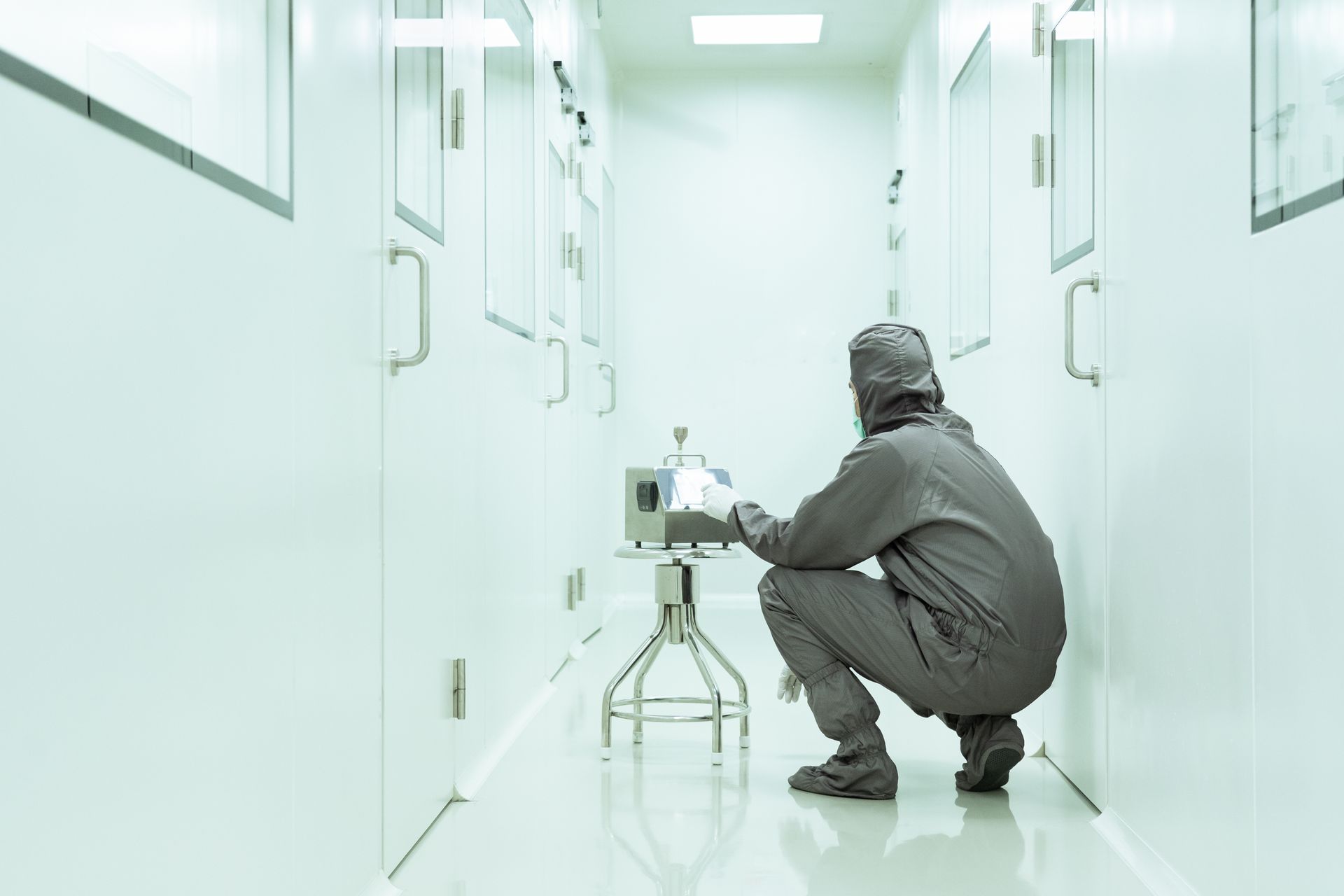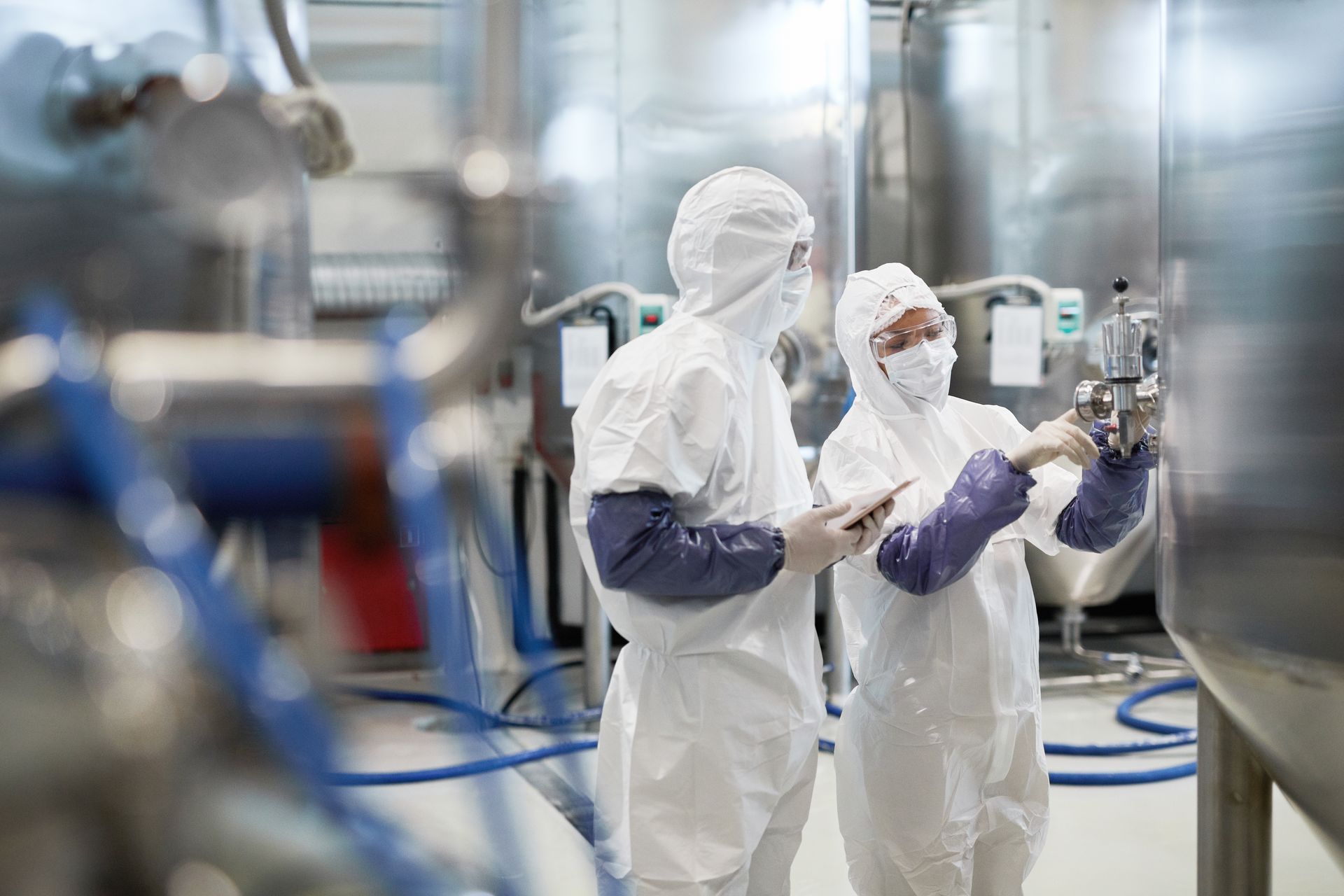The Effect of Particle Count on Cleanroom Performance

Introduction
Cleanrooms are highly controlled environments designed to minimize the presence of contaminants such as dust, airborne microbes, and chemical vapors, among others. These controlled environments are essential in various industries, including semiconductor manufacturing, pharmaceuticals, biotechnology, aerospace, and healthcare. One of the most critical aspects of cleanroom performance is the monitoring and control of particle count, as it directly influences the quality of products and processes within the cleanroom.
Particle count refers to the measurement of airborne particles within a given volume of air, typically expressed as the number of particles per cubic foot or cubic meter. These particles vary in size, ranging from nanometers to micrometers, and their presence can significantly impact the cleanroom environment, the products being manufactured, and the health and safety of individuals working within the facility.
In this article, we will explore the relationship between particle count and cleanroom performance, examining how particle contamination affects cleanroom operations and the steps taken to mitigate this issue.
Understanding Particle Count and Its Measurement
In a cleanroom, air quality is meticulously regulated to meet industry standards, which are often based on the number and size of particles per unit of air. These standards are defined by organizations like the International Organization for Standardization (ISO) through the ISO 14644 series of standards, which classify cleanrooms into different cleanliness classes based on particle counts.
Particle counters, which measure the number of particles present in the air, are the primary tools used to monitor particle count. These devices are capable of detecting particles at various sizes, such as 0.5 microns, 1 micron, or even smaller. The particle count data obtained from these counters allow cleanroom operators to assess the cleanliness of the environment and determine whether corrective actions are necessary.
The particle count is typically expressed in terms of particles per cubic foot or cubic meter, with different classes specifying the acceptable limits for different particle sizes. For instance, an ISO Class 5 cleanroom has stricter particle count limits than an ISO Class 7 room. These classifications are critical in industries where even a single particle can have severe consequences on the final product or process.
How Particle Count Affects Cleanroom Performance
- Product Quality and Reliability: Particle contamination can directly impact product quality in industries such as semiconductor manufacturing and pharmaceuticals. In semiconductor fabrication, for example, even the smallest particle can cause defects in microchips, leading to reduced performance or failure of electronic devices. Similarly, in the pharmaceutical industry, contamination by airborne particles can compromise the sterility of drug products, potentially resulting in product recalls, safety risks, or non-compliance with regulatory standards.
- Equipment and Process Integrity: Cleanroom performance is also tied to the operational efficiency of equipment. Particle contamination can cause wear and tear on sensitive machinery, leading to reduced equipment lifespan and frequent maintenance. This is particularly important in industries such as aerospace, where even tiny particles can cause significant damage to precision instruments or spacecraft components.
- Health and Safety Risks: Beyond product and process concerns, particle count can also influence the health and safety of workers within the cleanroom. In environments such as healthcare and biotechnology, where cleanrooms are used for sterile medical device production or cell culture work, particles can carry harmful microorganisms. The presence of these contaminants can increase the risk of infection or cross-contamination, particularly in sensitive environments like operating rooms, research labs, or drug manufacturing facilities.
- Compliance with Regulatory Standards: Cleanrooms in regulated industries must meet specific cleanliness criteria set by regulatory bodies such as the Food and Drug Administration (FDA), European Medicines Agency (EMA), and ISO. The particle count is a key factor in ensuring compliance with these standards. Non-compliance can result in product recalls, fines, and reputational damage. For example, pharmaceutical manufacturers are required to ensure that their cleanrooms meet specific ISO class standards for particle count, particularly for aseptic processes, where contamination could directly affect patient health.
The Role of Cleanroom Design and Maintenance
To maintain an optimal cleanroom environment, particle count must be continuously monitored and controlled. The design of the cleanroom plays a crucial role in this process. Cleanrooms are equipped with high-efficiency particulate air (HEPA) or ultra-low penetration air (ULPA) filters to capture airborne particles. These filters are strategically placed in the ventilation system to ensure a continuous flow of clean air while trapping contaminants.
The cleanroom design must also take into account factors such as airflow patterns, temperature, humidity, and personnel movement. For instance, laminar airflow, where the air flows in a uniform direction, is crucial in minimizing particle contamination in critical areas. Inadequate airflow can result in the accumulation of particles in certain zones, compromising the cleanliness of the entire room.
Regular maintenance and calibration of particle counters, filters, and other cleanroom equipment are also essential for keeping particle counts within acceptable limits. Filters must be replaced on a scheduled basis, and particle counters should be calibrated regularly to ensure their accuracy.
Strategies to Control Particle Count
- Implementing Stringent Protocols: Establishing strict protocols for cleanroom entry and exit is a fundamental strategy for minimizing particle count. Personnel working in cleanrooms must wear protective clothing, including gowns, gloves, face masks, and hair covers, to prevent shedding particles from clothing and skin. Additionally, the use of air showers and gowning areas at entry points helps to reduce the introduction of contaminants into the cleanroom environment.
- Proper Maintenance of HVAC Systems: The HVAC (heating, ventilation, and air conditioning) systems within cleanrooms must be regularly serviced to maintain the proper air exchange rate and pressure differential. Filters must be changed periodically, and the system should be designed to meet specific air cleanliness standards for the size and type of cleanroom.
- Monitoring and Real-Time Data Collection: Continuous monitoring of particle counts is crucial to maintaining cleanroom performance. Advanced particle counters provide real-time data, allowing cleanroom operators to make immediate adjustments if particle levels exceed acceptable thresholds. Automated alarm systems can alert operators to issues like filter failures or excessive airborne particles, enabling them to take corrective action swiftly.
- Routine Cleaning and Housekeeping: Regular cleaning and decontamination procedures help minimize the accumulation of particles. Special cleaning agents and techniques must be used to clean surfaces without generating additional airborne particles. Vacuuming systems equipped with HEPA filters and cleaning methods that minimize disruption to airflow are essential in keeping particle counts low.
Conclusion
The effect of particle count on cleanroom performance cannot be overstated. High particle levels can compromise product quality, process efficiency, and worker safety, while also hindering compliance with regulatory standards. To maintain a high-performing cleanroom, it is crucial to monitor particle counts closely, design the room with adequate air handling and filtration systems, and implement stringent protocols for cleanliness and maintenance.
Ultimately, controlling particle count in cleanrooms is a complex but necessary task that requires ongoing vigilance and attention to detail. The impact of a single particle on the integrity of a product or process highlights the importance of maintaining an environment with a low particle count to ensure safety, quality, and regulatory compliance.






